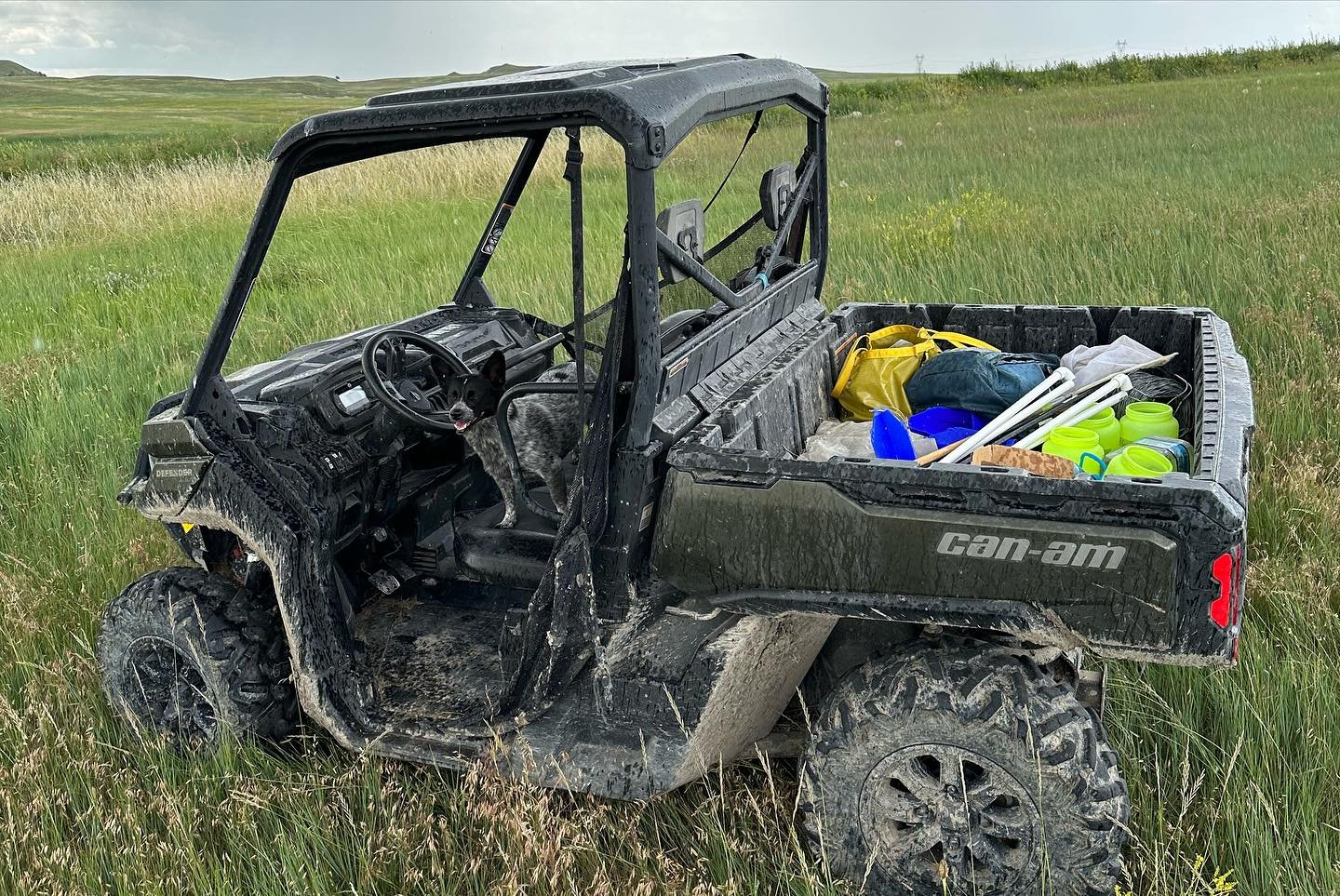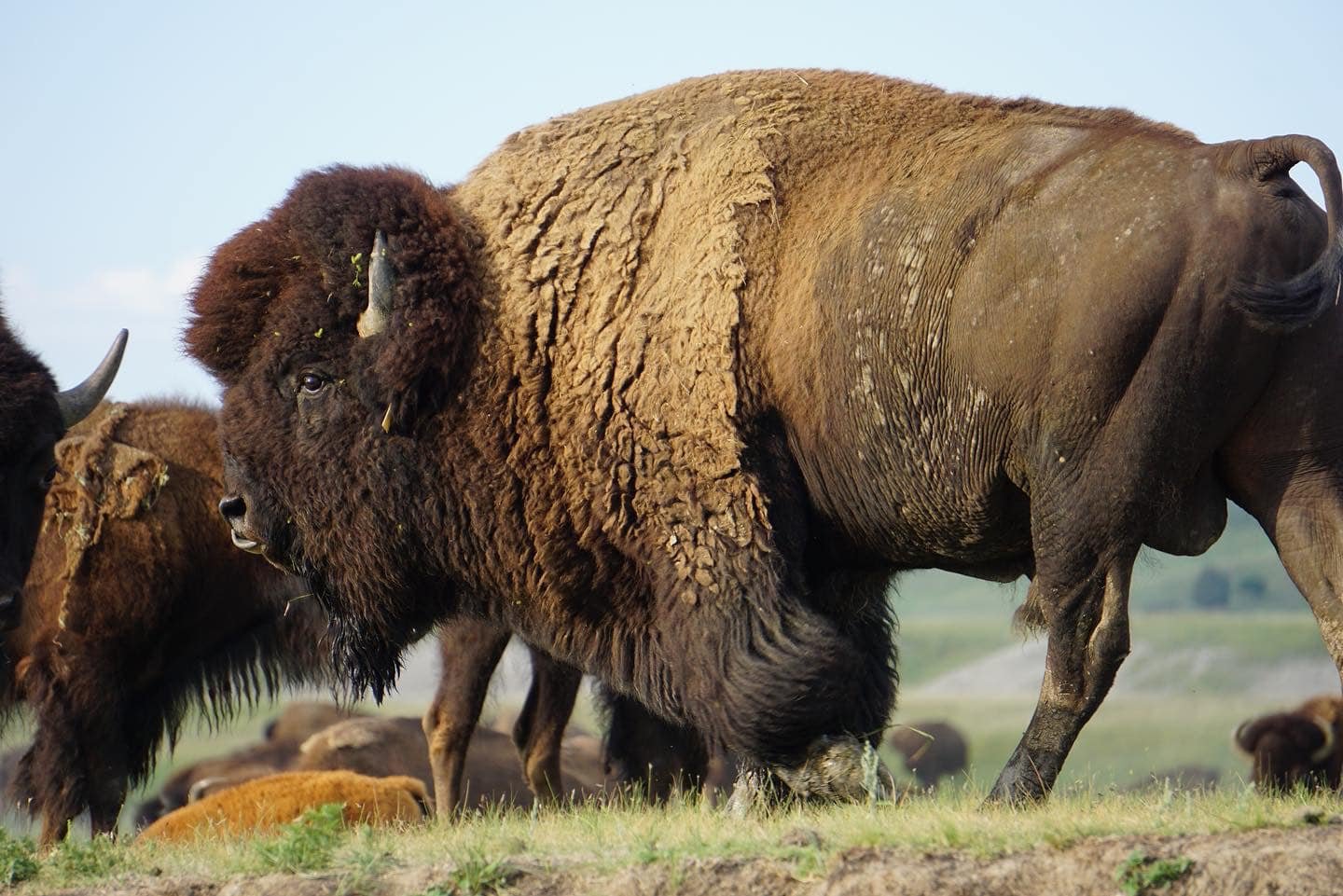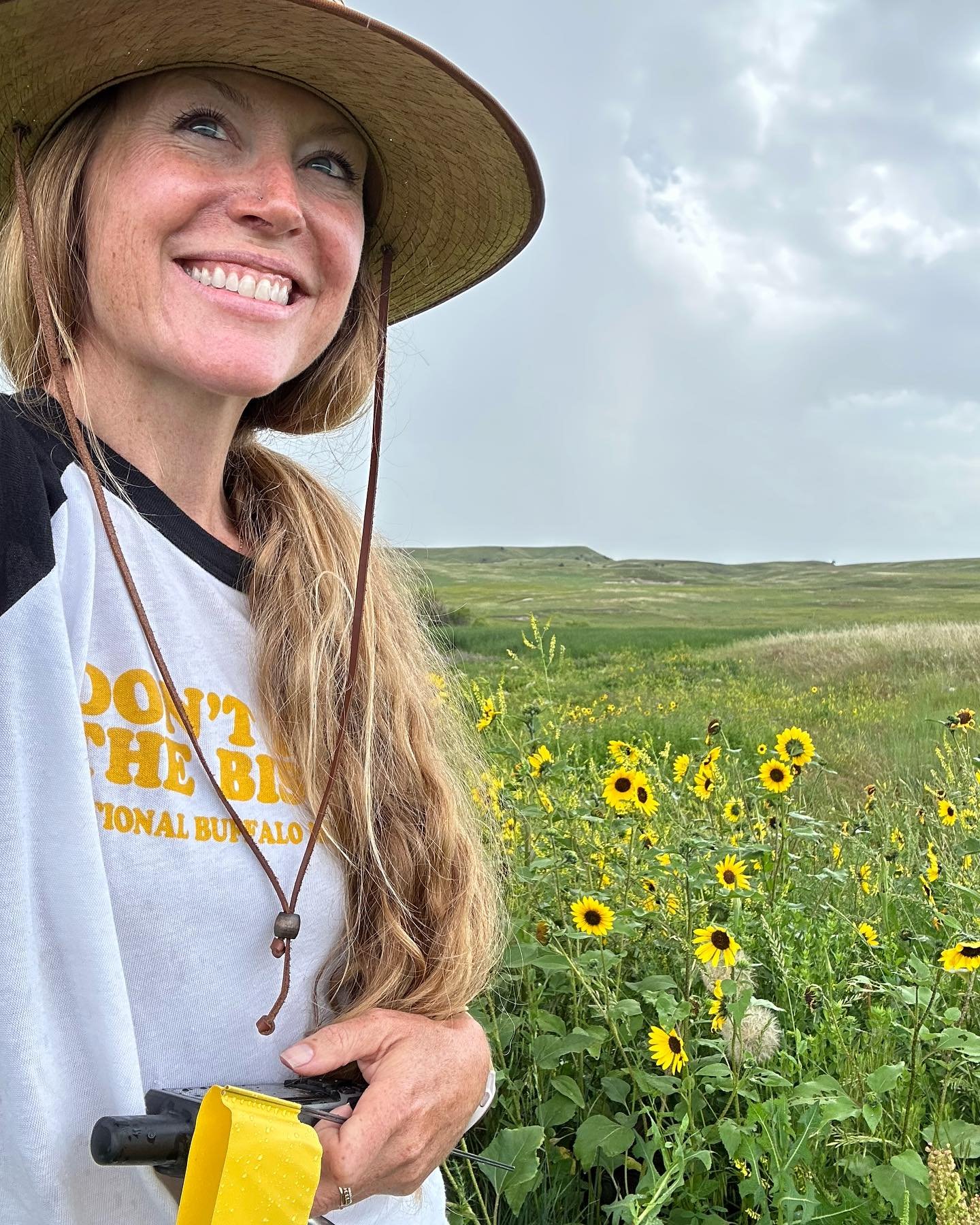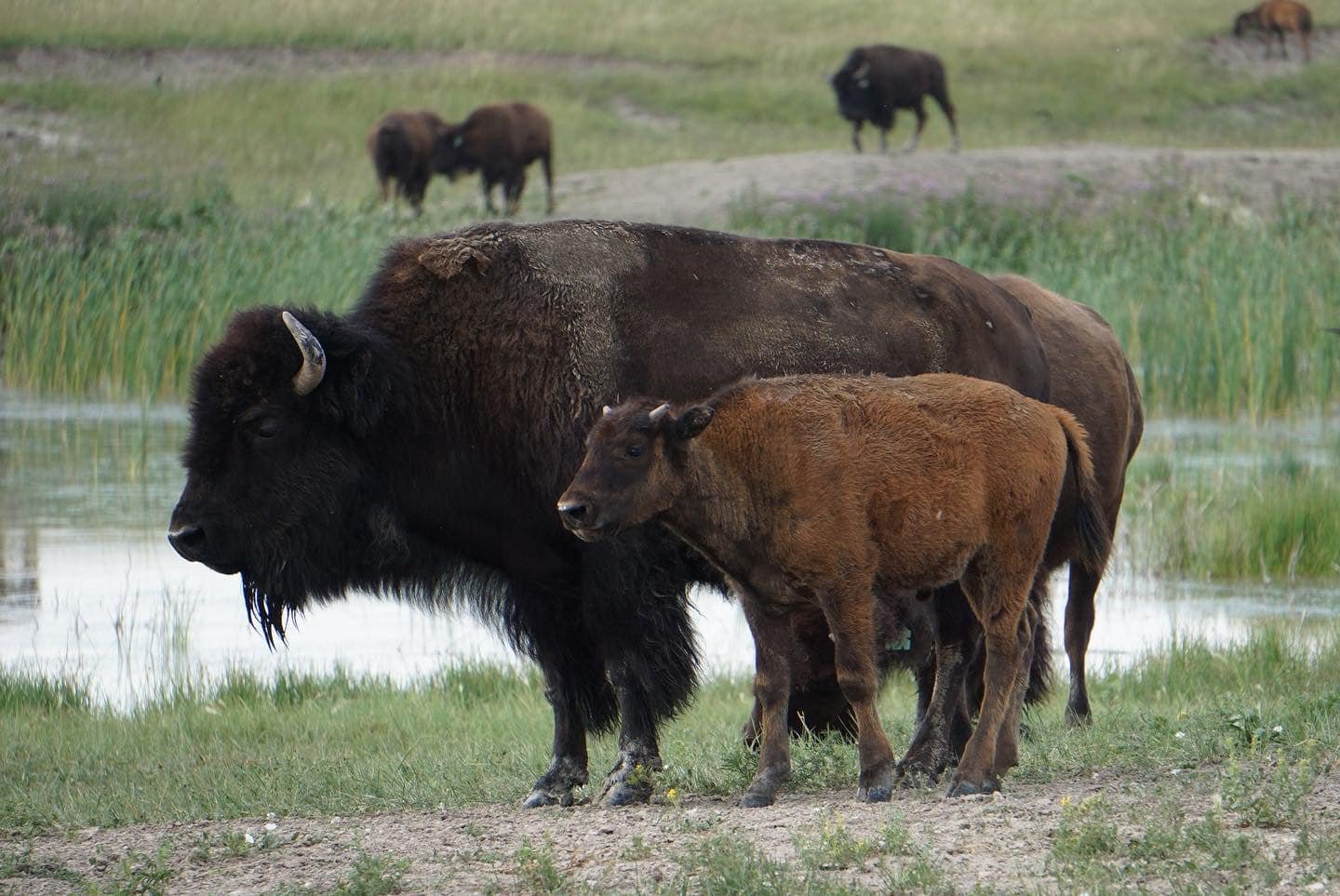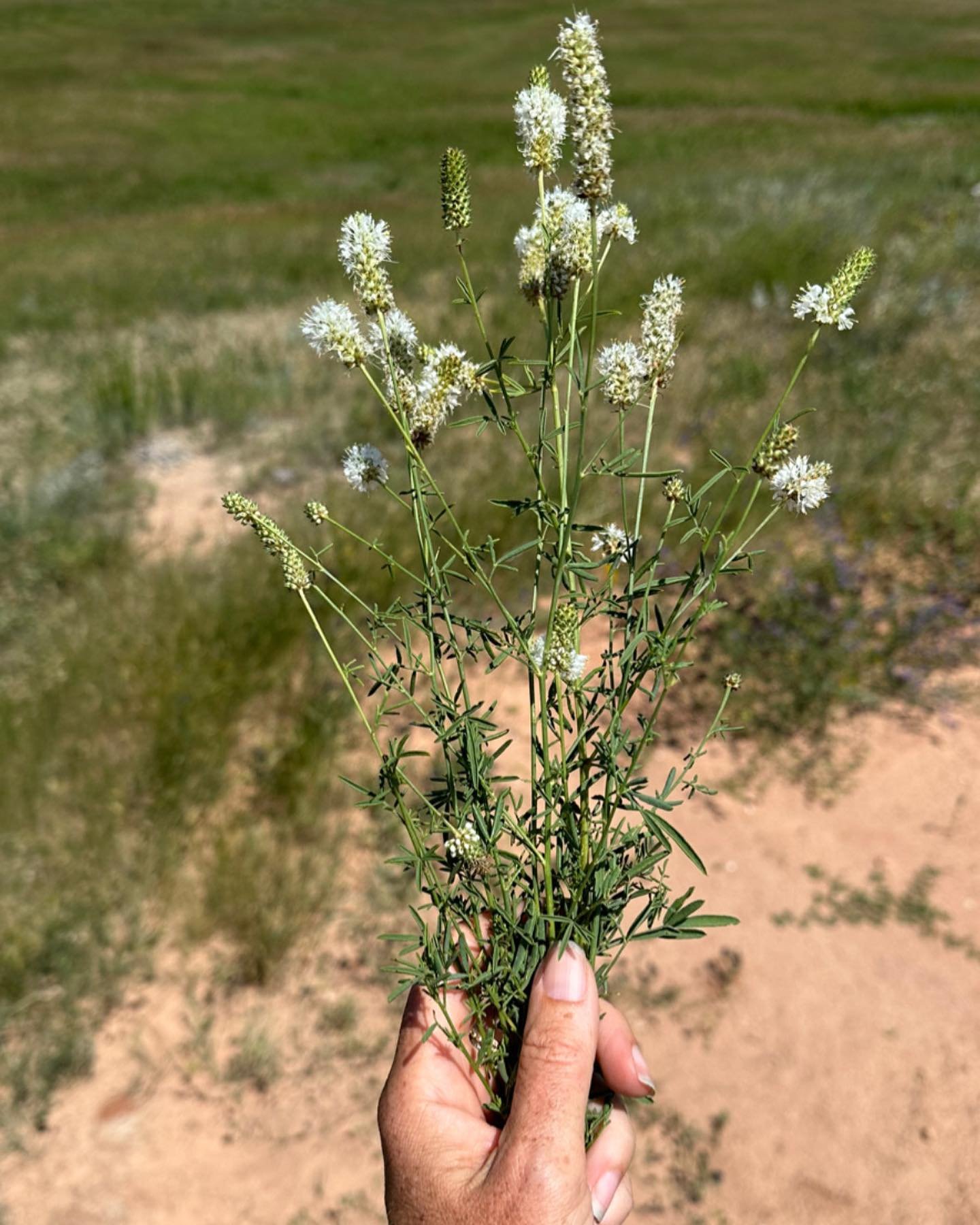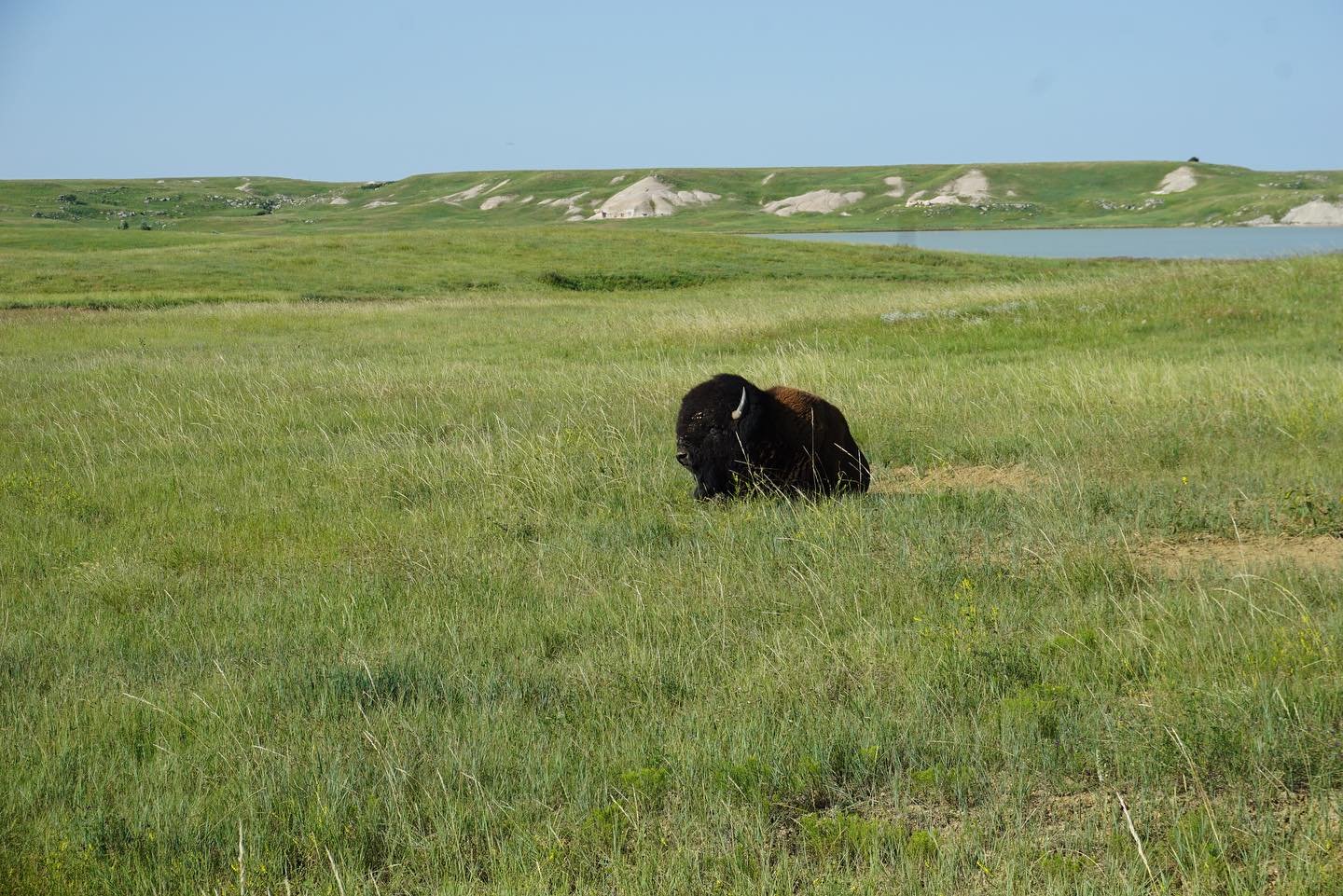Bees & Bison
Last summer I met the bison and their people at 777 Bison Ranch. My goal was to collect bee pollen for two days (for a project I was working on) and then continue on down the road. But I became stuck in a tar pit of wonder and I couldn’t move.
I ended up taking refuge at the ranch for about a week. Mimi, Moritz, Cody, and Justin were so kind, hospitable, and interested in my work.
I threw my project out the window and started devising a whole new way to look at the landscape.
This winter the BGO team designed a multi-year (decade??) project to better understand the coexistence of bison and bees on the landscape.
Here’s the jist -
One out of every three bites of food that we eat is thanks to a bee. Honey bees, and their close native bee cousins, add $29 billion to US farm income (Cornell Chronicle, 2012) through pollination services. Aside from the direct benefit of human food pollination, bees facilitate the reproduction of nearly 90% of plants, creating above-ground diversity which generates healthy soil and food for songbirds, grizzly bears, and everything in-between.
Despite the international awareness for their importance, honey bee hive losses continue to be high and unsustainable year after year (NASS, Bee Informed Partnership, 2021). Due to hive pest, chaotic weather, and pesticides, beekeeping is more expensive and more difficult every year, even for highly skilled multi-generation beekeepers (McCormick, 2023).
It’s not only honey bees and beekeepers that are struggling. There are over 4,000 species of native bees in North America. A recent study looking at collectible bee data found that half of the bee species monitored are in decline. Nearly 1 in 4 bee species in this study is imperiled and at increasing risk of extinction (USFWS, 2017) – the main culprit for the losses are urban expansion and the modern agricultural practice of monoculture which creates habitat loss and an overuse of pesticides and other synthetic chemicals.
Our bees, the pollinators of food for humans and wildlife, are lining up for their place on the endangered species list.
What if a major solution for bee loss was managed bison ranching? The interaction between grazing bison (Bison bison) and the overlapping native bee community (Anthophila;Hymenoptera) is not clearly understood. A 2021 publication explored the relationship between prescribed fire, bison grazing, and bee communities – suggesting ground and large cavity nesting bees to be unaffected by bison grazing, and twig/stem nesting bees to be negatively affected (Bruninga-Socolar et al., 2021). This paper also cited the questions to be incompletely resolved and appealed the need for further study.
What is strongly indicated, however, is the positive affect bison have on their surrounding ecology. Research presented by Ratajczak et al. (2022), celebrates the finding that, “Compared to ungrazed areas, reintroducing bison increased native plant species richness by 103% at local scales (10 m²) and 86% at the catchment scale. Gains in richness continued for 29 years and were resilient to the most extreme drought in four decades.”
In 2019 researchers found that the 777 Bison Ranch, unique for their approach utilizing adaptive multi-paddock grazing, boasted improved fine litter cover, improved water infiltration, two to three times the available forage biomass, improved plant composition, and decreased invasive plant levels and bare ground, relative to both light and heavy continuous grazing (Hillenbrand et al, 2019).
We believe the aforementioned attributes of bison grazing could provide excellent habitat for bees, and we would like to deepen our understanding of this dynamic.
We plan to understand the potentially synergistic or mutualistic interactions between honey bees, native bees, and bison by installing multi-year vegetation and pollinator monitoring areas at the 777 Bison Ranch. These efforts will examine:
🦬 Bee nesting frequency – examine the presence/absence of soil nesting bee sites in areas grazed by bison,
🦬 Bee habitat – identify the full complement of flowering forb species in the study area, and determine which forbs support pollinators while avoiding consumption by bison,
🦬 Bee communities – comprehensive sampling the of native bee species (including soil, stem/twig, wood, hive, and cavity nesting bees) using different passive and active trapping methods,
🦬 Pollen availability and nutritional content in flowers (joint project with USDA Tucson Bee Lab).
Though this is only year one, we’re already making some fascinating discoveries! We’ll be writing up our findings later this year, but in the meantime - continue to follow along on our social media pages and our newsletter for more stories, and if you’d like to help support this work – donate here.
References Cited
Bruninga-Socolar, B., Griffin, S., Portman, Z., Gibbs, J. Variation in prescribed fire and bison grazing supports multiple bee nesting groups in tallgrass prairie. Restoration Ecology, 2021. 30. 10.1111/rec.13507.
Campbell, J. “Comparison of ground nesting bee (Apoidea) abundance and diversity between bison wallows and adjacent prairie,” National Buffalo Foundation. August 24, 2021.
Hillenbrand, M., Thompson, R., Wang, F., Apfelbaum, S., Teague, R.. Impacts of holistic planned grazing with bison compared to continuous grazing with cattle in South Dakota shortgrass prairie, Agriculture, Ecosystems & Environment, Volume 279, 2019; Pages 156-168, ISSN 0167-8809, https://doi.org/10.1016/j.agee.2019.02.005.
Kopec, K., Burd, L. A.. “Pollinators in Peril: A systematic status review of North American and Hawaiian native bees,” Center for Biological Diversity. February, 2017.
McCormick, Gail. “Honey bee colony loss in the U.S. linked to mites, extreme weather, and pesticides.” Penn State Science News, January 30, 2023.
Ramanujan, Krishna. “Insect pollinators contribute $29 billion to U.S. farm income.” Cornell Chronicle, May 22, 2012.
Ratajczak, Z., Collins, S.L., Blair, J.M., Koerner, S.E., Louthan, A.M., Smith, M.D., Taylor, J., Nippert, J. Reintroducing bison results in long-running and resilient increases in grassland diversity. Proceedings of the National Academy of Sciences, 2022; 119 (36) DOI: 10.1073/pnas.2210433119
Steinhauer, N., Aurell, D., Bruckner, S., Wilson, M., Rennich, K., Williams, G., for the Bee Informed Partnership (2021). United States Honey Bee Colony Losses 2021-2022: Preliminary Results. https://beeinformed.org/2022/07/27/united-states-honey-bee-colony-losses-2021-2022-preliminary-results-from-the-bee-informed-partnership



